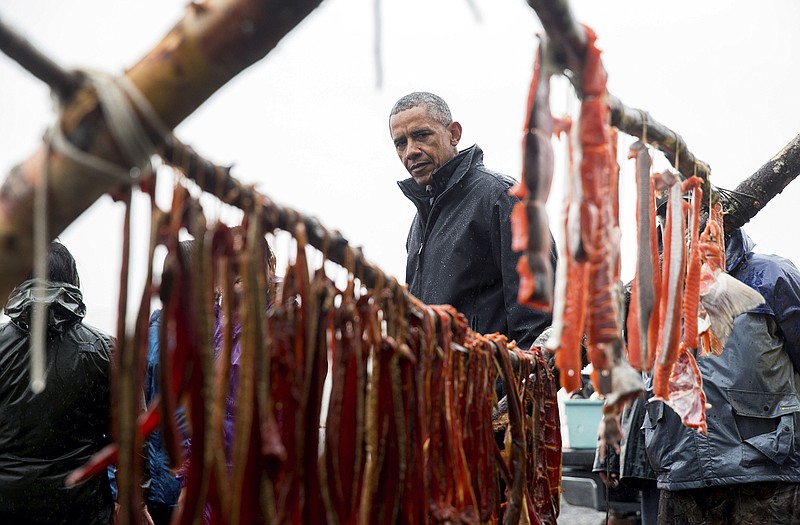ANCHORAGE, Alaska (AP) - With a historic visit to the Alaska Arctic, President Barack Obama was shining a spotlight Wednesday on the plight of residents in rural Alaska, where Alaska Natives and others toil under rough-and-tumble conditions most Americans would be hard-pressed to imagine.
Closing out his three-day tour of Alaska, Obama set off first for the fishing village of Dillingham in Western Alaska. He was to become the first sitting president to travel north of the Arctic Circle later in the day with a visit to the town of Kotzebue, a regional hub with a population of barely more than 3,000.
Obama's trip will put on rare display the ways of life and daily challenges in Alaska's more than 200 far-flung rural villages. Outside of Kotzebue, 1 in 5 in the Alaska Arctic doesn't have a proper kitchen, according to the U.S. Census Bureau. And even more lack complete plumbing. Instead, many use the "honey bucket" system - five-gallon drums that serve as makeshift toilets are emptied into nearby sewage lagoons.
Obama's goal was to showcase the havoc he says human-influenced climate change is wreaking on Alaska's delicate landscape: entire rural villages sinking into the ground as permafrost thaws, protective sea ice melts and temperatures climb.
Alaska Natives have joined the president in sounding the alarm on climate change. Yet the obstacles they confront daily in rural Alaska extend far deeper, raising questions about whether the federal government has done enough to help some of the country's most destitute citizens.
This is a life of subsistence hunting for bowhead whales, walruses and seals, a proud tradition of dependence on the land that poses immense logistical challenges.
"The vast majority of Americans have no idea there are dozens of communities in Alaska that live like this," Sen. Dan Sullivan, R-Alaska, said in an interview. "It's unacceptable, and we need to do more to fix it."
Even as Obama's travels brought him near the Bering Sea, there were five Chinese PLA Navy ships in the sea the U.S. military has been tracking for a number of days.
White House press secretary Josh Earnest said U.S. officials don't view the Chinese vessels to be a threat but he added the reason for their presence "is still unclear."
The ships were participating in a military exercise with Russia in previous days and then broke off to head into the Bering Sea, according to a U.S. defense official who was not authorized to discuss the matter publicly so spoke on condition of anonymity.
According to Navy Cdr. Bill Urban, the U.S. respects the right of all navies to operate in international waters, under international law.
With no roads to their villages, residents in rural Alaska are dependent on boats, snowmobiles and bush planes - weather permitting - to ferry them to rare doctor visits or other business. Among Alaska Natives, cancer is the leading killer, with incidence rates about 16 percent higher than for white men and women in the U.S., according to the Centers for Disease Control and Prevention.

